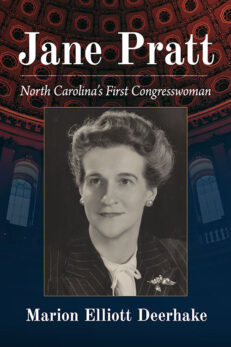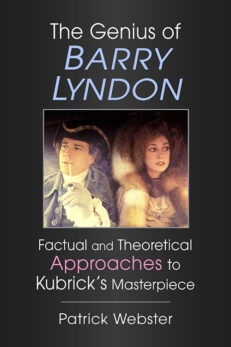The Genius of Barry Lyndon
Factual and Theoretical Approaches to Kubrick’s Masterpiece
$75.00
In stock
About the Book
One of the most visually compelling films ever made, Barry Lyndon can—and should, argues the author—be seen as Stanley Kubrick’s masterpiece. This comprehensive analysis examines such topics as the unique way in which Kubrick photographed the film, Kubrick’s subtle understanding of cinematic storytelling, the deliberate upturning of generic expectation, and the eclectic use of music. It also provides a more rigorous reading of the film from a diverse range of theoretical approaches: structuralist, feminist, psychoanalytical, Marxist and postcolonial readings.
About the Author(s)
Bibliographic Details
Patrick Webster
Format: softcover (6 x 9)
Pages: 284
Bibliographic Info: appendices, notes, bibliography, index
Copyright Date: 2024
pISBN: 978-1-4766-8997-5
eISBN: 978-1-4766-5087-6
Imprint: McFarland
Table of Contents
Introduction 1
Part I: By What Means Stanley Kubrick Acquired the Way to Make the Film Barry Lyndon 7
1. How Did They Make a Film Like Barry Lyndon? The Making of the Film: The Initial Screenplay, Budgets, Locations, Cast and Crew, Academy Awards, Artistic Legacy, and Other Diverse Concerns 8
2. “Don’t touch that, it’s a very important work of art!” The Critics Respond to the Film 20
3. “Tragical-historical, tragical-comical, historical-pastoral”: The Use of Genre in Barry Lyndon 35
4. Barry Lyndon as Palimpsest: The Influence of the Film’s Unmade Precursor—A Masterpiece Unsigned 44
5. A Dreamer of Pictures: The Visual Aesthetics of Barry Lyndon 53
6. The Age of Reason: The Eighteenth Century in the Work of Stanley Kubrick 64
7. Makepeace, Not War: The Adaptation of Thackeray’s Source Novel 74
8. Of Course, the Story Could Be Wrong: Reliable and Unreliable Narrators in Barry Lyndon 88
9. Grande Musicale: The Soundtrack of Barry Lyndon 99
Part II: Containing an Account of the Film Barry Lyndon from a Diverse Range of Theoretical Approaches 111
10. “This is one of my best pictures”: A Structuralist and Semiotic Reading of Barry Lyndon 112
11. “Women of Ireland”: A Feminist Reading of Barry Lyndon 135
12. “Gentlemen, cock your pistols”: A Psychoanalytical Reading of Barry Lyndon 148
13. “I’m a man of property”: Marxist and Postcolonial Readings of Barry Lyndon 166
Conclusion 182
Epilogue 191
Appendix I: A Timeline 193
Appendix II: The First Screenplay, February 18, 1973 196
Appendix III: Narrative Structure: Chapter by Chapter, Scene by Scene, Shot by Shot 204
Appendix IV: A Barry Lyndon Miscellany: Additions, Addendums, and Anecdotes 216
Deleted Scenes 216
Errors 217
Uncredited Speaking Roles 218
Child Actors 218
Vivian Kubrick and Barry Lyndon 219
Tatum O’Neal and Barry Lyndon 219
Locations 220
Multiple Takes 221
Barry Lyndon and Kubrick’s Twentieth-Century Novels 222
Barry Lyndon’s Palimpsest—Napoleon—an Original Narrative Source 223
Barry Lyndon Unmade/Napoleon Accomplished: An Alternate History 224
Barry Lyndon—Kenneth Griffith—and The Man on the Rock 225
Sexual Content 226
Major and Minor Keys 226
The Final Title Card: An Existentialist Reading 227
Chess and Filmmaking 228
Intertextual Felicities: Voyage of the Damned, Uncle Vanya, Heaven’s Gate, and Barry Lyndon 229
Barry Lyndon and the 1964 US Presidential Campaign 230
Conspiracy Theories: The JFK Assassination and Barry Lyndon 230
“It’s What’s in the Frame!”: Kubrickian Studies and Barry Lyndon 231
Kubrick and the Queen 232
The IRA Revisited 233
Appendix V: Cast and Crew Credits 234
Chapter Notes 239
Bibliography 261
Index 267





